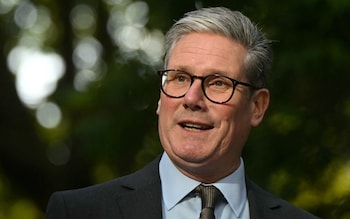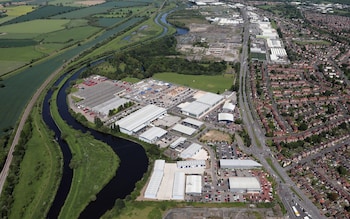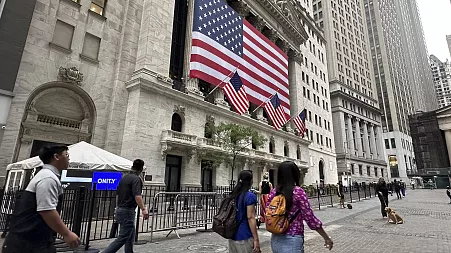
Britain’s first credit card launched with a bang. Barclays sent out 1.25m cards to customers in a dramatic and large-scale launch in 1966.
The move unleashed enormous changes: suddenly borrowing was easier than ever. Women in particular were liberated as the bank, unusually for the time, did not require a man to support their application for credit.
The decades that followed saw a boom in borrowing, ranging from mortgages all the way through to payday loans. By the financial crisis, households had £1.3 trillion of debt, according to Bank of England data, far outweighing the £1 trillion held in their bank accounts.
The borrowing binge helped to drive economic growth as free-spending Britons bought everything from houses and holidays to meals out and concert tickets.
Not so today. After a lean decade following the financial crisis, the pandemic decisively broke the country’s addiction to debt. Now, households owe £1.6 trillion – but have savings of almost £1.9 trillion.
“Britons are becoming more German,” says Yael Selfin, chief economist at KPMG UK.
“They’re becoming more frugal and careful. In the past people would just withdraw equity from the house to spend on holidays. I think that’s a thing of the past.”
It presents a threat to Sir Keir Starmer’s plans to make Britain the fastest-growing economy in the G7. Consumption makes up around two-thirds of GDP, so household spending is vital to growth.
Before Covid, households set aside around £5.50 for every £100 they earned, which mostly went into their pensions. During the pandemic, when people were stuck at home with less to spend on, savings spiked to a peak of more than £27 for every £100.
This was not predicted to last. “Revenge spending” was expected to sweep the nation once Covid restrictions ended, as shoppers, diners and holidaymakers made up for lost time.
But after dipping to around £6.60 in mid-2022, the savings rate has climbed back up to unusually high levels.
In the early months of this year, more than £11 out of every £100 earned was set aside for a rainy day, according to the Office for National Statistics (ONS). Excluding the pandemic, the savings rate was the highest seen in more than a decade.
Several factors appear to be propelling this sustained rise in saving.
Higher interest rates are certainly a factor. Analysis by Goldman Sachs indicates that British savers are more sensitive to returns than those in other nations, sticking more in the bank when interest rates rise.
Families have also been rebuilding their buffers after the pain of the cost of living crisis, though Thomas Pugh, economist at RSM UK, says this has clearly now been accomplished.
That suggests the cost of living crisis may have changed people’s perception of the rainy day fund, with families feeling they need to save more to feel secure.
Borrowers are also keen to pay down their debts in the face of rising interest rates. Mortgagors who took out loans when money was cheap have a particular incentive to pay off more now costs are high. The Bank of England estimates that the typical mortgage borrower whose fixed rate loan expires between this summer and the end of 2026 will see their repayments jump by £180 per month on average, an increase of 28pc.
For 400,000 such households, the increase in monthly bills will be more than 50pc.
Such pressure means that workers are, in aggregate, largely saving their pay rises instead of spending them, says Sonali Punhani, economist at Bank of America.
“The gains that we have seen in real incomes, because inflation has come down in the last few months, have been saved,” she says.
Traditional patterns of behaviour appear to have been shaken by the events of recent years. Usually, households save when they are worried about their jobs prospects and their financial security, and spend when they are relaxed about the state of the economy.
But unemployment, at 4.2pc, is very low by historical standards. Growth, while not at the top of the G7, has also been strong.
Ian Stewart, chief economist at Deloitte, says: “With these levels of unemployment, you would tend to expect much lower levels of saving. This suggests a caution on the part of UK consumers.”
He believes the series of recent shocks – from Covid to the energy crisis to the cost of living crisis – have jolted families out of their old spending habits and prompted people to save more.
Stewart calls this “scarring,” referring to “the way in which expectations and optimism are affected for a lasting period by negative experiences, particularly the pandemic and the energy crisis”.
The consequences for economic growth and the Prime Minister’s targets are dire: this new-found prudence has blown a hole in consumer spending, says Pugh.
“That increase in the saving ratio from 5.5pc before the pandemic to 8.5pc or so is worth £40bn to £50bn per year in spending,” he says. “That is a serious chunk of change.”
Retail sales bear the scars of this parsimony: after a brief post-lockdown bum, sales fell below 2019 levels and have stayed there ever since.
This has helped to explain Britain’s weak economic recovery since the pandemic, including last year’s shallow recession. The UK’s economy is 2.3pc bigger than it was in the final quarter of 2019. By contrast the US has grown by 9.4pc over the same period.
It is not a coincidence that America’s savings rate has fallen to a 16-year low of below 3pc, with optimistic shoppers propelling an economic boom.
Notably, the “gangbusters” growth Britain enjoyed in the first half of this year was driven by trade and by Government spending, not consumer spending.
The one hope for Sir Keir is that households are in a much better position to spend, should they wish to. With lower debts and higher savings, relative to the size of the economy, an unleashed consumer spending boom could power US-like growth and help the Prime Minister achieve his goal of overseeing the fastest growing economy in the G7.
If that does not materialise, Britain risks suffering from the paradox of thrift: that saving more, while sensible for each individual household, may deprive the economy of vital spending and so make us all worse off in the end.
Much depends on families’ confidence for the future. The auguries are not promising.
Interest rate cuts are expected to be slower in Britain than in the US. Meanwhile, taxes are rising and the winter fuel allowance cut for most pensioners will hurt spending power.
That is spilling over into consumer confidence, driving a drop in GFK’s long-running index of household sentiment to its lowest level in a year in August.
“People are hearing what Keir Starmer is saying about all these tough challenges ahead, and they are taking it personally,” says Neil Bellamy, consumer insights director at the research group.
“If there is economic growth, it is not going to be consumer-led at the moment. People are almost retrenching in their spending and protecting themselves and their family first of all.”
Disclaimer: The copyright of this article belongs to the original author. Reposting this article is solely for the purpose of information dissemination and does not constitute any investment advice. If there is any infringement, please contact us immediately. We will make corrections or deletions as necessary. Thank you.



